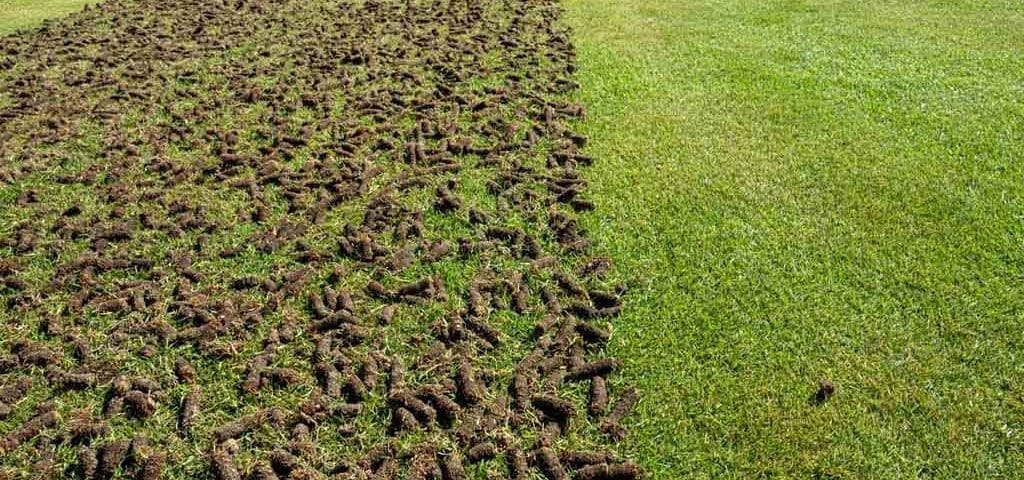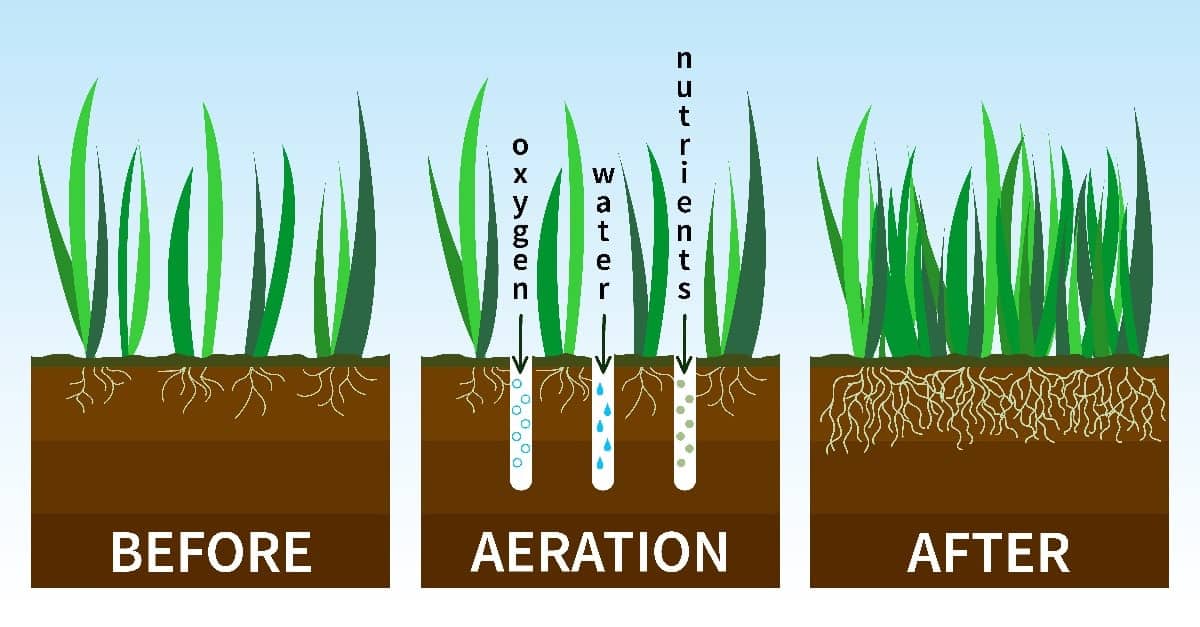No one likes to feel claustrophobic and your lawn is no exception. When grass roots are given a little bit of space, they grow stronger and fuller making a more vibrant and healthy lawn. Most lawns need to be aerated at least once a year which is made easy with liquid aeration.
What is Liquid Aeration?
Liquid Aeration is a lawn treatment that increases the air flow and moisture retention of your lawn by opening up microscopic pores and breaking down compacted soil. Liquid aeration ideally has the same effects as traditional core aeration, but without the mess, cleanup, and cost. Liquid aeration is generally a simple process, where the aeration solution is combined with water and sprayed liberally over your lawn. Revive is the liquid aeration product used by Senske, which is a natural and organic treatment made of plant byproducts, organic and decomposition extracts, and fulvo-humates.
Does Liquid Aeration Work?
Under the right conditions, liquid lawn aeration is an effective treatment that promotes healthier and greener grass. While liquid aeration is less disruptive than core aeration, it takes longer for the benefits of liquid aeration to become visible. Roughly 45-60 days after a treatment, you will begin to see a greener lawn with new growth and less thatch. Ensure that the liquid aeration product you choose to treat your lawn has quality ingredients, which will lead to a better result. A good liquid aeration product, like Revive, contains nutrients that support healthy soil. Liquid aeration treatment is ideal for lawns that are slightly compacted and have moderate to low levels of thatch (less than ½ inch) – the treatment becomes less effective for soil that is heavily compacted or has significant thatch build up.
Liquid Aeration vs Core Aeration
Mechanical core aeration is the process of poking holes in soil with machinery and removing soil cores. Manual aeration increases oxygen flow and causes the decomposition of excess thatch, a mix of living and dead compacted plant material that settles between soil and grass. Thatch inhibits oxygen flow and soaks up most of the water that your lawn receives before it reaches the roots where it is needed most. This causes underlying soil to become dry and nutrient deprived. Core aeration will have a more immediate impact, but the results can be shorter lived than with liquid aeration.
The soil type and condition of your yard will determine whether core aeration or liquid aeration is the best treatment solution. Lawns that are extremely compacted, highly trafficked, or have significant amounts of thatch (over ½ inch), should be treated with core aeration. Liquid aeration treatment is ideal for lawns that are slightly compacted and have moderate to low levels of thatch. Core aeration and liquid aeration can be used together for maximum benefit, allowing the liquid solution to penetrate into the holes created from the core aeration.
How to Achieve Optimal Results
Overseeding and Fertilizing
The process of liquid aeration is simple, but following these simple steps will achieve optimal results. Begin by mowing your lawn as short as possible and removing debris and dead grass. Then apply a generous dose of grass seed to sparse lawn areas before applying the liquid aeration. Follow the overseeding with the liquid aeration treatment. Liquid aeration is convenient because you can combine fertilizer with the liquid aeration solution, fertilizing and aerating at the same time. It is also important to water the product just enough to allow it to soak into the ground, but not so much that it creates runoff and waste. Given that liquid aeration products like Revive are made of natural and organic ingredients, you don’t have to worry about over applying the product. Following treatment, water your lawn and ensure that the soil is kept moist to enhance germination, but not overwatered, until the new grass is roughly 2 inches high. Additional treatments of liquid aeration can be reapplied every 45-60 days if desired.
When to Apply Liquid Aeration
The best time to liquid aerate your lawn is generally either in the spring or fall. For best results, apply the liquid aeration solution when temperatures are over 50ºF. Fall is an optimal time for overseeding because soil is still warm which will cause the new seed to germinate quickly. During the fall, grass puts down roots, and the pores created from liquid aeration assist in giving roots room to grow, meaning the following spring your lawn will have a strong foundation. If aerating in the spring, Revive recommends that turf be at least 50% out of winter dormancy before the first liquid aeration treatment. Spring aeration will allow the soil to absorb more water during hot summer months and retain more moisture.
Liquid Aeration from a Local Expert
If you are unsure whether your lawn would be better served by mechanical core aeration or liquid aeration, contact a specialist near you. Senske offers quality aeration services and other lawn care services across the American West. For more information on keeping your grass vibrant and beautiful, get a free estimate today!


